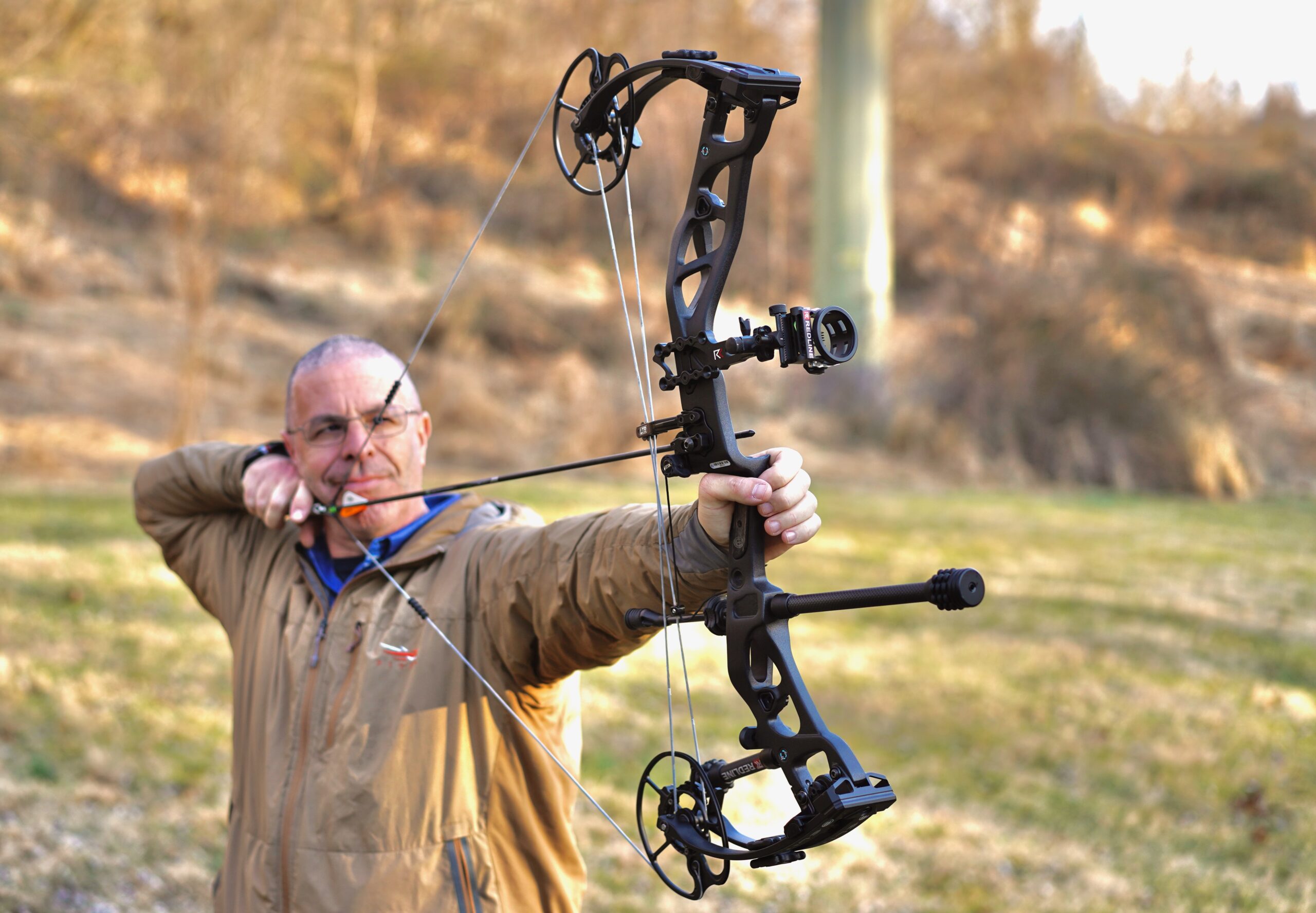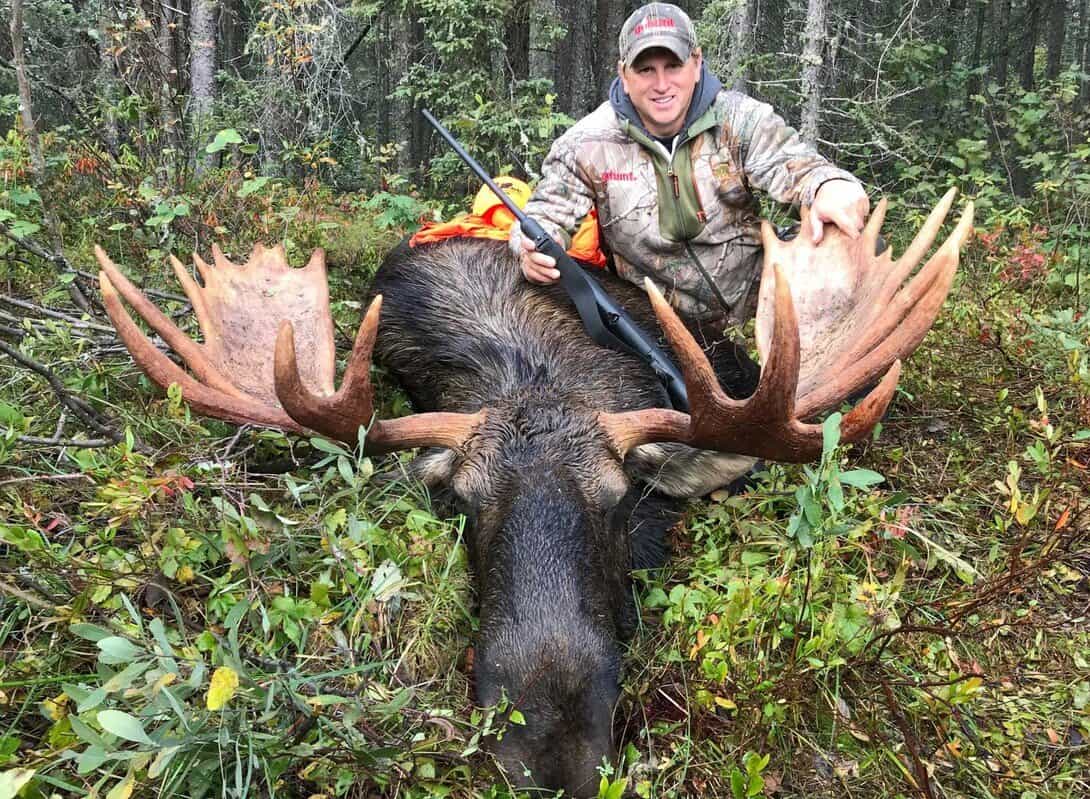Hunting moose with a bow requires skill and accuracy due to the large size of the animal and the need for a precise shot. Hunters must practice stealth and patience while tracking and approaching their target in the wilderness.
Understanding the behavior and habitat of moose is crucial for a successful hunt, as well as ensuring one has the proper equipment and permits. Bow hunting can provide a challenging but rewarding experience, allowing hunters to connect more intimately with nature and test their archery skills against one of the largest game animals in North America.
The thrill and excitement of a close encounter with a majestic moose make bow hunting a popular and respected tradition among outdoor enthusiasts.

Credit: www.tiktok.com
Choosing The Right Equipment
Hunting moose with a bow requires precision and careful planning. One crucial aspect of preparing for this thrilling adventure is choosing the right equipment. From selecting the appropriate bow to purchasing quality arrows, each decision plays a vital role in ensuring a successful and ethical hunt.
Selecting The Right Bow
When hunting moose with a bow, choose a compound or recurve bow with a higher draw weight for better penetration. Ensure the bow is comfortable to hold and maneuver in various hunting conditions. Consider the bow’s length and weight for ease of use during long hunts.
Purchasing Quality Arrows
Invest in carbon or aluminum arrows that are appropriate for hunting moose. Check the spine and weight of the arrows to ensure they match your bow’s specifications. Select broadheads with sharp blades for effective and ethical shots.
Understanding Moose Behavior
Moose hunting with a bow requires a deep understanding of their behavior to increase your chances of a successful hunt.
Study Their Habitat And Movement
Moose are typically found near water sources like lakes and rivers.
They prefer dense forests with lots of vegetation for cover.
Look for tracks, droppings, and signs of browsing to determine their movement patterns.
Understanding their habitat helps in setting up an effective hunting strategy.
Recognizing Rutting Season Behavior
During rutting season, male moose can be more aggressive and vocal.
Females may stay in more open areas to attract males.
Knowing these behaviors can help you locate moose more efficiently.
Mastering Bow Hunting Techniques
Bow hunting for moose requires a high level of skill and precision. Mastering the art of bow hunting techniques is essential to ensure a successful and ethical hunt. In this section, we will delve into the critical aspects of perfecting stealth and patience, as well as sharpening your shot placement skills in order to improve your overall hunting success.
Perfecting Stealth And Patience
When bow hunting for moose, perfecting your stealth and patience is paramount. In order to get within range of a moose, you must be incredibly stealthy in your approach. Utilize natural cover and minimize noise to avoid alerting these large and sensitive animals. Your ability to remain patient and still for extended periods is also crucial, as moose are unpredictable and may take time to present a clear shot opportunity.
Sharpening Your Shot Placement Skills
Mastering shot placement is essential for ethical and effective bow hunting. Understanding the anatomy of a moose and identifying the optimal shot placement is critical to ensure a quick and humane harvest. Practicing precision and accuracy with your bow is imperative to deliver clean and ethical kills, ensuring the moose does not suffer unnecessarily.
“` Please let me know if there is anything else I can assist you with.
Credit: www.outdoorlife.com
Planning An Effective Hunt
Hunting moose with a bow is an exhilarating and challenging experience that requires careful planning before venturing into the wilderness. To ensure a successful and enjoyable hunt, it is crucial to develop a strategic approach and thoroughly scout the hunting area. In this article, we will explore the key steps involved in planning a moose hunt with a bow, including scouting the hunting area and developing a strategic approach.
Scouting The Hunting Area
Scouting plays a vital role in determining the success of your moose hunt with a bow. To maximize your chances of spotting and stalking a moose, it is imperative to have a thorough knowledge of the hunting area. Here are a few steps to help you effectively scout the hunting area:
- Map Study: Familiarize yourself with topographical maps and aerial imagery of the area. Identify potential moose habitat, including water sources, dense vegetation, and open meadows.
- Research: Utilize online resources, hunting forums, and local hunting experts to gather information about moose behavior and movement patterns in the area.
- On-site Investigation: Visit the hunting area before the hunt to locate game trails, feeding areas, and bedding sites. Look for signs of moose presence, such as tracks, scat, and rubs on trees.
- Trail Cameras: Utilize trail cameras in strategic locations to capture images or video footage of moose activity. This will provide valuable insights into their habits and help you choose optimal hunting spots.
Developing A Strategic Approach
After thoroughly scouting the hunting area, it’s time to develop a strategic approach that maximizes your chances of a successful moose hunt with a bow. Consider the following steps to establish a solid hunting plan:
- Set Objectives: Determine your goals for the hunt, whether it’s harvesting a specific trophy-sized moose or simply enjoying the experience of being in the wilderness.
- Select a Stand Location: Based on your scouting observations and knowledge of moose behavior, choose stand locations that offer a concealment advantage, easy access, and clear shooting lanes.
- Plan Your Approach: Outline the path you will take to reach your stand locations, considering factors such as wind direction, noise control, and potential disturbances.
- Practice Stealth and Patience: When stalking a moose, move slowly and silently, utilizing natural cover whenever possible. Patience is key, as moose can be unpredictable and may require extended waiting periods.
- Stay Prepared: Ensure you have all the necessary hunting equipment, including a well-tuned bow, sharp broadheads, and appropriate camouflage clothing. Familiarize yourself with the local hunting regulations and have the required licenses and permits.
Planning an effective moose hunt with a bow is essential for both safety and success. By thoroughly scouting the hunting area and developing a strategic approach, you can increase your chances of having a memorable hunting experience. Stay tuned for our next article, where we will explore effective techniques for tracking and stalking moose in the wild.
Ensuring Ethical And Legal Practices
Hunting moose with a bow is an exhilarating and challenging activity that requires skill, patience, and adherence to ethical and legal practices. As responsible hunters, it is important to prioritize the well-being of the animals and the preservation of their population. This blog post will explore key aspects related to hunting moose with a bow, with a focus on understanding hunting regulations and promoting sustainable hunting practices.
Understanding Hunting Regulations
Hunting regulations play a crucial role in ensuring the preservation of wildlife and maintaining a balanced ecosystem. Before embarking on a moose hunting adventure, it is essential to familiarize yourself with the specific hunting regulations of your region or state. Here are some key points to consider:
- Licensing requirements: Obtain the necessary hunting license or permit required by your local wildlife management agency. This ensures that you are legally authorized to participate in the activity and helps support conservation efforts.
- Seasonal restrictions: Pay attention to the designated hunting seasons for moose. These regulations typically outline specific dates during which hunting activities are permitted, helping to prevent excessive pressure on the population during sensitive periods such as mating or calving seasons.
- Bag limits: Bag limits specify the maximum number of moose an individual hunter can harvest within a given hunting season. These limits are put in place to control the harvest and prevent overexploitation. Adhering to bag limits ensures the sustainability of the moose population and allows for the continued enjoyment of future hunting opportunities.
- Weapon restrictions: Some regions may have specific regulations regarding the types of bows or arrows that are permitted for moose hunting. It is crucial to understand and comply with these regulations to ensure humane kills and minimize the risk of injuring the animal unnecessarily.
Promoting Sustainable Hunting Practices
Sustainable hunting practices are essential to maintain the long-term health and abundance of moose populations. By following ethical and responsible practices, hunters can contribute to the preservation of this majestic species. Here are some guidelines to promote sustainability:
- Respect for quotas: Keep track of and stay within the designated quotas set by wildlife management authorities. These quotas are established based on scientific data and are aimed at maintaining a healthy moose population. Respect the limits to avoid overhunting and negative impacts on the ecosystem.
- Proper shot placement: An accurate shot is essential for a quick and humane kill. It is crucial to practice shooting proficiency and aim for vital organs, such as the heart or lungs, to ensure a swift and ethical harvest. This minimizes suffering and waste.
- Leave no trace: When hunting moose, it is important to practice leave-no-trace principles. This includes properly disposing of any waste, avoiding habitat destruction, and respecting the natural environment. By minimizing our impact, we help preserve the habitats of moose and other wildlife species.
- Continuous learning: Stay updated with the latest research and best practices in moose hunting. As a responsible hunter, it is our duty to continuously educate ourselves about new techniques, regulations, and conservation efforts. This knowledge allows us to make informed decisions that promote ethical hunting practices and contribute to the long-term sustainability of moose populations.

Credit: northamerican-outdoorsman.com
Frequently Asked Questions For Hunting Moose With Bow
Q: What Is The Best Time Of Year To Hunt Moose With A Bow?
A: The best time of year to hunt moose with a bow is during the rut season, typically in the early fall. During this time, moose are more active and vocal, making it easier to locate and target them. However, it is important to check the hunting regulations in your specific area for any restrictions or guidelines.
Q: What Is The Effective Range For Hunting Moose With A Bow?
A: The effective range for hunting moose with a bow is generally around 30 to 40 yards. It is crucial to practice and become comfortable shooting accurately within this range before attempting to hunt moose. Shooting beyond this distance can result in wounded animals and ethical concerns.
Q: How Should I Approach Stalking A Moose While Bow Hunting?
A: When stalking a moose while bow hunting, it is important to move slowly and quietly, taking advantage of natural cover and terrain. Pay attention to the direction of the wind to ensure that your scent doesn’t alert the moose.
Use dense foliage or trees as concealment while closing the gap.
Q: What Type Of Bow And Arrow Setup Is Recommended For Moose Hunting?
A: A compound bow with a draw weight of at least 60 pounds is recommended for moose hunting. This will provide the necessary power and kinetic energy to effectively penetrate the moose’s thick hide and reach vital organs. Choose broadheads specifically designed for large game and practice extensively with your setup before hunting.
Conclusion
In closing, hunting moose with a bow is a thrilling and challenging endeavor. The experience of testing your skills against such a magnificent creature is unrivaled. With proper preparation and respect for nature, the hunt can be a truly rewarding experience.
Embrace the journey and enjoy the unique connection with the wilderness.



